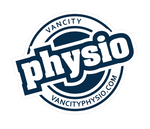Home physiotherapy involves performing therapeutic exercises and activities at home, either independently or under the guidance of a physiotherapist. It is often recommended for patients who have undergone surgery, suffered an injury, or have chronic conditions that affect mobility and physical function. Here’s a comprehensive overview:
Benefits of Home Physiotherapy
- Convenience: No need to travel to a clinic, saving time and effort.
- Comfort: Being in a familiar environment can reduce stress and improve compliance.
- Personalized Care: Tailored exercises and routines to fit individual needs.
- Cost-effective: Reduces expenses related to transportation and clinic visits.
Common Conditions Treated
- Post-surgical recovery: Joint replacements, spinal surgeries.
- Injuries: Sprains, fractures, muscle strains.
- Chronic conditions: Arthritis, Parkinson’s disease, multiple sclerosis.
- Neurological disorders: Stroke, spinal cord injuries.
- Cardiopulmonary conditions: Chronic obstructive pulmonary disease (COPD), heart surgery recovery.
Typical Home Physiotherapy Techniques
- Range of Motion Exercises: To maintain or improve joint flexibility.
- Strengthening Exercises: Using resistance bands, weights, or bodyweight to enhance muscle strength.
- Balance and Coordination Training: To prevent falls and improve stability.
- Aerobic Exercises: Low-impact activities like walking or cycling to improve cardiovascular health.
- Manual Therapy: Techniques performed by a physiotherapist, such as massage or mobilization.
- Education: Guidance on posture, body mechanics, and self-management techniques.
Steps for Implementing Home Physiotherapy
- Assessment: A physiotherapist assesses the patient’s condition and creates a tailored plan.
- Goal Setting: Establish short-term and long-term goals based on the patient’s needs.
- Exercise Prescription: Detailed instructions on specific exercises, frequency, and duration.
- Monitoring Progress: Regular check-ins with a physiotherapist to adjust the plan as needed.
- Safety Precautions: Ensuring exercises are performed correctly to prevent injury.
Tools and Equipment
- Resistance Bands: For strengthening exercises.
- Exercise Balls: For core stability and balance exercises.
- Treadmills or Stationary Bikes: For cardiovascular exercises.
- Light Weights: For muscle strengthening.
- Mats: For floor exercises and stretches.
Tips for Success
- Consistency: Regular exercise is crucial for progress.
- Proper Technique: Follow instructions to avoid injury.
- Gradual Progression: Increase intensity and duration gradually.
- Hydration and Nutrition: Maintain a healthy diet and stay hydrated.
- Communication: Keep in touch with your physiotherapist about any pain or difficulties.
When to Seek Professional Help
- Severe Pain: If you experience significant pain during exercises.
- No Improvement: Lack of progress or worsening of symptoms.
- New Symptoms: Development of new symptoms or injuries.
Home physiotherapy can be highly effective when tailored to the individual's needs and consistently followed. Always consult with a qualified physiotherapist to develop a safe and effective home exercise plan.


